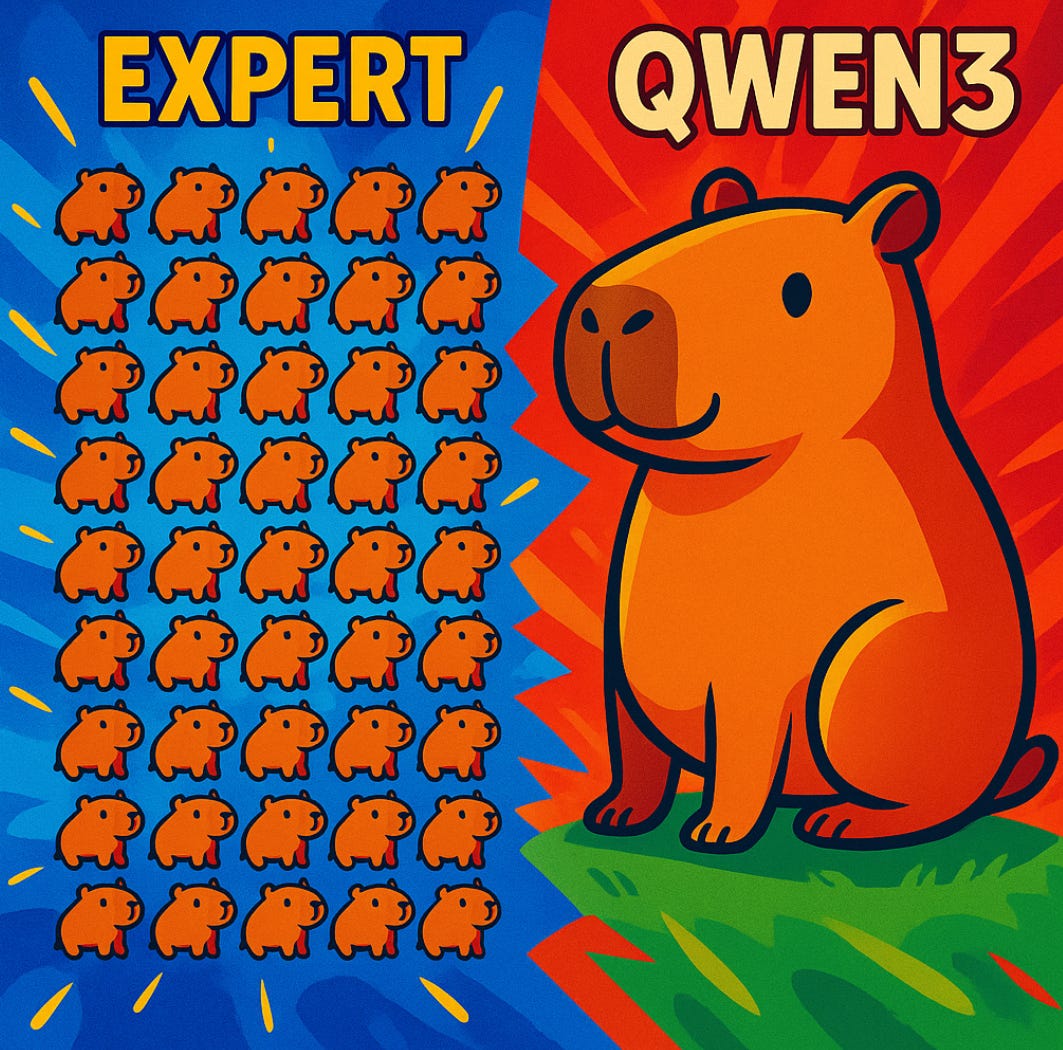Qwen3-30B-A3B vs Qwen3-32B: Is the MoE Model Really Worth It?
Qwen3 MoE is a good choice, but don't quantize it
In previous articles, we saw how to quantize and fine-tune Qwen3 models.
Qwen3 is available in a range of sizes, from 0.6B to 235B parameters, including two Mixture-of-Experts (MoE) variants. Among these, Qwen3-32B and Qwen3-30B-A3B stand out as models of similar size. The latter is an MoE model that activates only 3B parameters during inference, making it significantly faster than the dense Qwen3-32B, though with a slight trade-off in accuracy on most tasks.
But how significant is this accuracy gap? Should Qwen3-30B-A3B be your default choice for faster inference? And what happens to this performance difference after quantization? While dense models like Qwen3-32B tend to quantize well, MoE models, especially those with very small expert networks like Qwen3-30B-A3B, may be significantly more challenging to quantize.
In this article, we’ll answer these questions. We’ll start by explaining how Qwen3-30B-A3B works. Then, we’ll compare its performance with Qwen3-32B before and after 2-bit and 4-bit quantization. Then, we will look into the actual speedup delivered by the MoE architecture, and how it holds after quantization.
You can find all evaluation and quantization code in the accompanying notebook:






